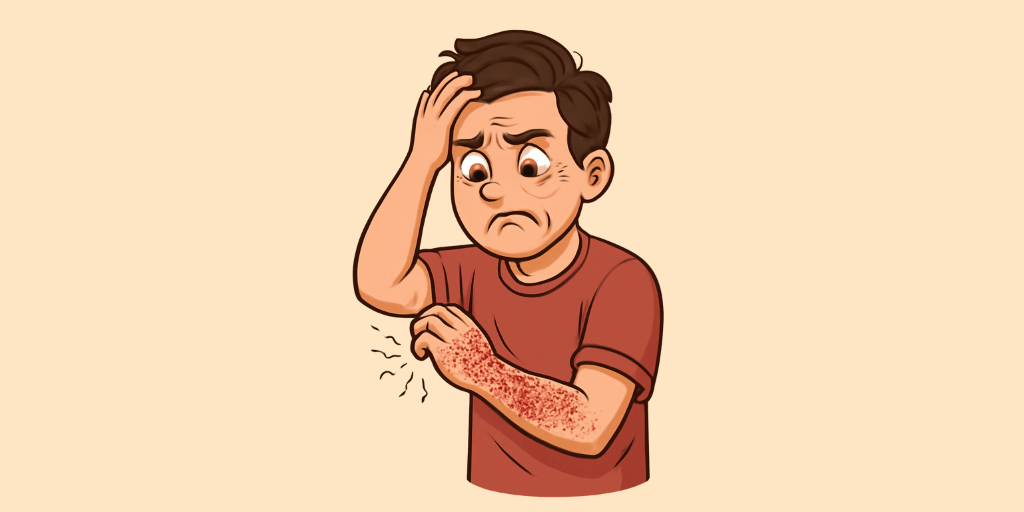Ayurvedic Name: Kitibh
Description:
This condition appears as hard, dry, and cracked skin with blackish-brown discoloration. It is a Vata-Kapha dominant disorder where the skin becomes thick, rough, and scaly like a scab (Kitibha). It correlates with Lichen Planus or Chronic Dermatitis. Treatment includes Guggulu formulations (Kaishore Guggulu, Yograj Guggulu), Sariva, Manjishtha, and local application of Neem and Triphala pastes.
Signs & Symptoms:
Kitibh features Kushta (Skin Lesions), Shotha (Swelling), Rukshata (Dryness), Kandu (Itching), and Agnimandya (Poor Digestion), often with digestive disturbances.
Diagnosis:
Clinical Examination or Genetic Testing
Risk Factors:
- Dietary factors: Overeating and consuming high-fat, spicy, or fried foods can contribute to Kitibh (itching and skin problems). A poor diet low in essential vitamins and minerals can lead to skin dryness and irritation.
- Lifestyle factors: Stress, poor sleep, and environmental irritants can trigger Kitibh. Lack of hydration and insufficient care of the skin can also worsen this condition.
Complications:
- Itchy Skin (Kitibh): Persistent itching caused by allergies, infections, or skin disorders.
- Inflammation (Shotha): Swelling and redness in the affected area due to irritation or infection.
- Discoloration (Vikrita Twak): Uneven skin tone or patches due to ongoing irritation.
Epidemeology:
Kitibh (Itchy Skin) is often caused by allergies, dry skin, or skin conditions like eczema or psoriasis. It is more common in individuals with weakened immunity or those exposed to harsh chemicals or irritants.

